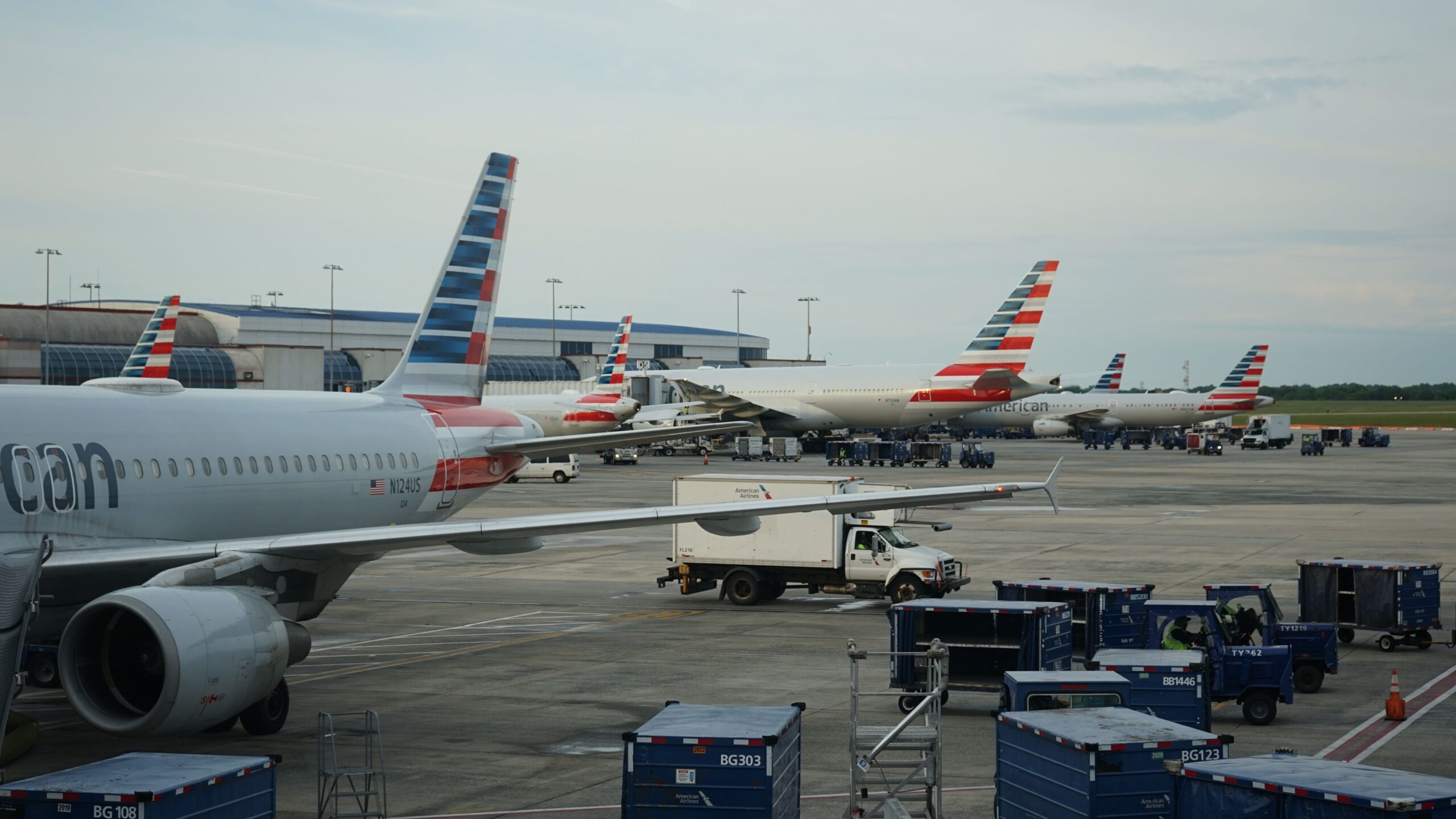Summary
- American Airlines’ Charlotte hub has eight distinct waves of flights throughout the day.
- In September, American carried approximately 3.8 million passengers to, from, and over Charlotte, of which about 2.7 million connected there.
- The top transit airport pair was Norfolk-San Diego, a Navy-driven market.
I love airline hubs: the huge number of routes, frequency of flights, and equipment types. The level of activity, whether near-constant (so-called a ‘rolling’ hub) or with very distinct waves throughout the day, can be intoxicating. Charlotte, American Airlines’ second-busiest hub, is no exception. In this article, I examine where American’s Charlotte transfer passengers actually went. But first, a network summary.
American at Charlotte: September
Analysis of Cirium data shows that American (and American Eagle) had an average of 1,157 daily departures/arrivals at Charlotte in September, although it rose to as many as 1,284.
The following image shows that its movements were highly coordinated, with eight distinct waves throughout the day to drive frequency, connectivity, choice, and competitiveness. No wonder regional jets are so crucial at Charlotte. They operated 42% of American’s flights there, more than at any of its other hubs except Chicago O’Hare.
Image: OAG
Its network that month involved 18 countries, with 149 non-stop destinations. Some 129 were in the US, and 20 were abroad. Not surprisingly, it had more flights to Orlando than anywhere else, with its full network shown below.
At just 75 miles (121 km), Greenville/Spartanburg was its shortest route, while Rome – 4,813 miles (7,745 km) away – was the longest. No destination in South America, Asia, Middle East, or beyond was served; it has other hubs for these places.
Image: OAG
But where did passengers go?
Analysis of booking data shows that American carried approximately 3.8 million passengers to, from, and over Charlotte in September. About 2.7 million people – some 90,000 daily – transferred there, such is the hub’s geographic location, scale, and connectivity strength.
Breaking down transit traffic indicates that around 84% of connecting passengers traveled between two domestic flights. Elsewhere, the most-traveled international markets were Mexico-US, Germany-US, Jamaica-US, and the Dominican Republic-US.
Photo: Unaccompanied Media I Shutterstock
It is more insightful at the airport level. Analysis reveals more than 250 airport pairs in September had at least 1,000 passengers transit through Charlotte, with the following 10 being the largest:
- Norfolk-San Diego
- Norfolk-Jacksvonille
- Indianapolis-Raleigh Durham
- Charleston-San Diego
- Philadelphia-San Antonio
- Norfolk-Seattle
- Chicago O’Hare-West Palm Beach
- Richmond-San Diego
- Las Vegas-Raleigh Durham
- Raleigh Durham-San Diego
Note the importance of the Navy, particularly related to the strong presence of San Diego and Norfolk. In September, American carried ~200 passengers daily in its top transit market: Norfolk-Charlotte-San Diego.
Photo: Robin Guess | Shutterstock
What about Orlando?
Despite Orlando having more Charlotte flights than anywhere else, its most-flown connecting market – to/from Memphis – ‘only’ ranked 11th. Yet 80+ airports had a minimum of 500 passengers fly to/from the Florida city via Charlotte. When all markets are combined, Orlando had an average of ~2,500 daily passengers fly over the North Carolina hub.
When was the last time that you connected at the North Carolina hub? Let us know in the comments section.





